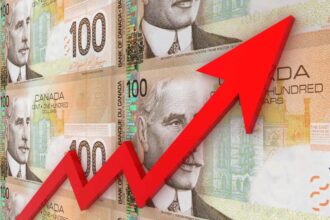The markets trembled last week as missiles lit up the skies over Israel and Iran, sending ripples through global oil prices that Canadians may soon feel at the pumps and beyond. While thousands of kilometers separate North America from the Middle East conflict zone, the economic shockwaves could hit Canadian wallets with surprising speed.
“We’re watching a potential inflation catalyst unfold in real time,” says economist Mariam Chen of the Canadian Economic Institute. “The interconnectedness of global markets means regional conflicts can quickly become everyone’s financial concern.”
Oil prices surged nearly 4% immediately following Iran’s missile barrage against Israel, reaching $72 USD per barrel before settling back slightly. This volatility comes at a precarious moment for Canada’s economy, which has only recently shown signs of cooling inflation.
The Bank of Canada, having paused its aggressive interest rate hikes, now faces a dilemma. Governor Tiff Macklem had signaled confidence in the inflation battle just weeks ago, but escalating Middle East tensions threaten to undermine progress. Energy costs, which influence everything from transportation to food production, remain the inflation wild card that keeps central bankers awake at night.
For average Canadians, the impact could manifest beyond just higher gas prices. The agricultural sector, heavily dependent on petroleum-based fertilizers and transportation, may see production costs climb. Manufacturing and shipping sectors would similarly face pressure, potentially triggering price increases across consumer goods categories.
“The timing couldn’t be worse for Canadian households,” notes consumer advocate Jordan Parsons. “Many families are still adjusting to higher interest rates and increased living costs. Any additional inflation pressure now could strain already tight budgets.”
Financial markets have responded with predictable nervousness. The Toronto Stock Exchange’s energy sector gained 2.3% while broader market indicators reflected investor uncertainty. Gold prices, traditionally a safe haven during geopolitical turbulence, climbed to nearly $2,400 USD per ounce.
Canadian pension funds and investment portfolios with significant energy sector holdings may see short-term gains, but the broader economic picture remains concerning. Sustained conflict could reverse recent progress on inflation, potentially forcing the Bank of Canada to reconsider its rate cut timeline.
Government officials have attempted to calm markets, with Finance Minister Chrystia Freeland emphasizing Canada’s energy security and robust financial systems. “We continue to monitor the situation closely,” she stated during a press conference in Ottawa. “Our economic fundamentals remain strong.”
Energy analysts suggest the inflation impact depends largely on conflict duration. A brief flare-up may cause only temporary price spikes, while prolonged hostilities could entrench higher energy costs and accelerate inflation across sectors.
For now, economists recommend Canadians prepare for potential price increases while avoiding panic. The conflict’s ultimate impact remains uncertain, but its influence on Canadian inflation has already begun. The question isn’t if we’ll feel the effects—but how deeply and for how long.


















